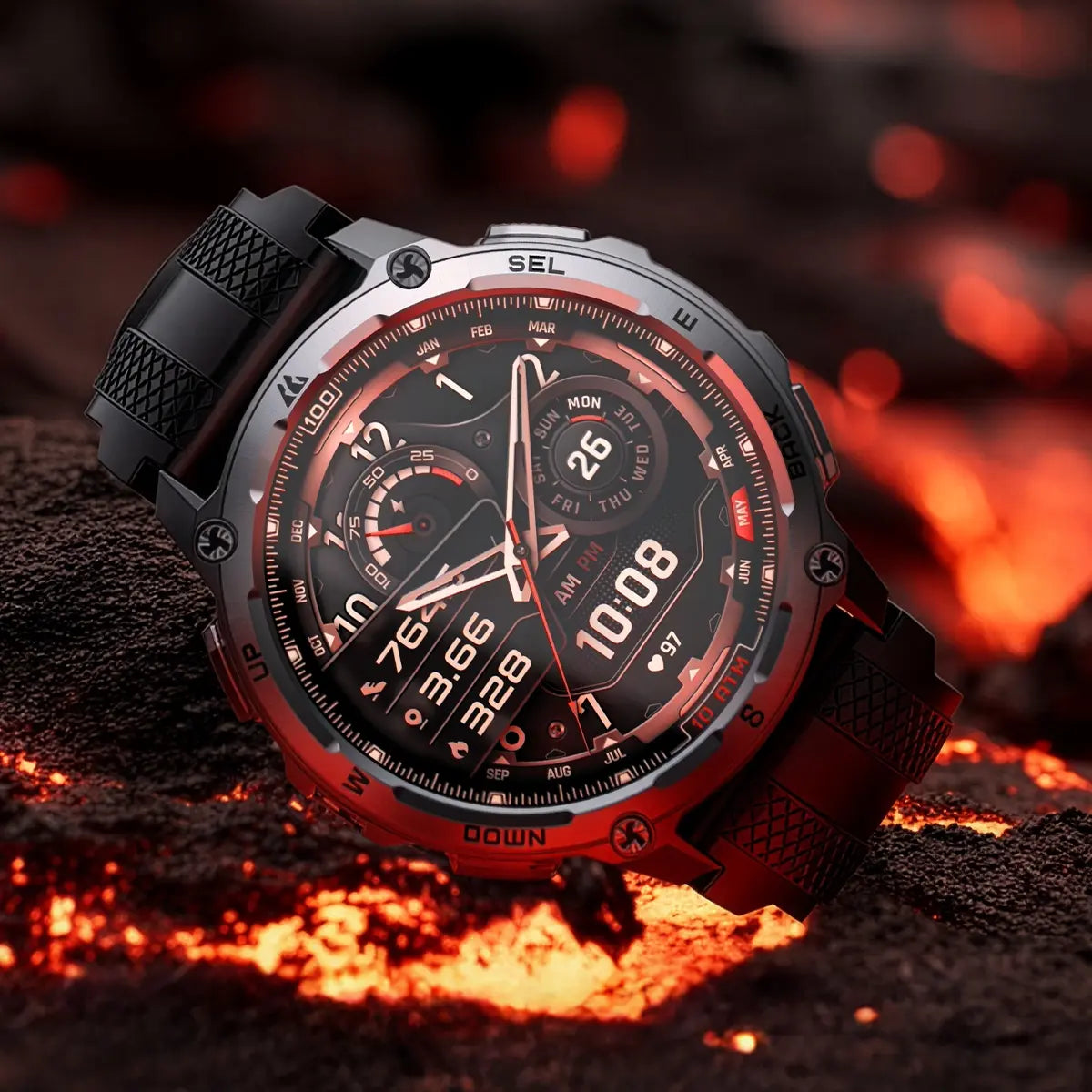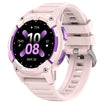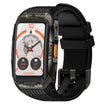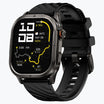When you go off-grid, you stop negotiating with comfort. There are no spare batteries, no navigation signal, and no one to call when something stops working. Every piece of gear has to earn its place not because it’s smart, but because it stays alive on its own.
That’s where a tactical compass watch comes in. It doesn’t promise convenience. It promises continuity and in the wild, that’s the one promise that counts.
What Off-Grid Survival Really Means
Off-grid survival isn’t about escaping society. It’s about removing assumptions. When you lose power and signal, you realize how dependent every device is on invisible systems — satellites, servers, chargers.
A true survivalist starts from the opposite direction: What can still function when nothing else does?
The answer is almost always mechanical, solar, or magnetic. A tactical compass watch belongs to that family. It creates its own rhythm, reads the Earth’s field directly, and asks for nothing but light and motion.
Once you understand that principle, you begin to see the watch not as an accessory but as a self-contained information system — one that doesn’t need permission to work.
Why a Tactical Compass Watch Matters in Off-Grid Navigation

Navigation off the grid isn’t about finding where you are.it’s about staying oriented while the environment changes faster than your tools can react. GPS can fail silently.
A compass can’t. A good compass watch measures direction against the planet itself, not a satellite. It doesn’t buffer or disconnect. It just tells you where north is — instantly, every time.
The real advantage is not the reading itself, but how fast you can recover direction when you’re uncertain. If you stop for thirty seconds, take a bearing, and match it against your map, you regain the geometry of the land before fear fills the gap.
And when both your direction and your time are stable, you can estimate progress, light left in the day, and distance to safety all from your wrist.
A compass watch doesn’t replace digital navigation; it anchors it. When GPS falters, this watch keeps your mind steady.
Reliable Power and Independent Operation
Every survival story that ends badly starts with a dead device. The cause isn’t drama — it’s design. Most electronics burn power to stay connected, not to stay alive. A tactical compass watch is built on the opposite principle: low consumption, physical efficiency, and self-reliance.
Solar-powered dials absorb even weak daylight, storing enough energy to last for months. Quartz models can run for a decade on a single cell. Mechanical versions go one step further — as long as you move, they move. They have no dependence on charging ports, cables, or firmware.
This kind of independence changes how you behave. You stop counting hours of battery and start counting usable daylight. That mental shift — from managing charge to managing time — is the essence of real survival thinking.
Accurate Direction and Navigation in the Field
Disorientation starts quietly. The ground looks familiar. The ridge line bends a little. Then the wind shifts, and you realize you’ve been walking five degrees off for an hour. That’s how people get lost.
A compass watch prevents that drift before it becomes a crisis. The magnetic needle or sensor gives you an immediate bearing, and the rotating bezel locks your direction so you can maintain it while walking.
With a map, you can triangulate your position by taking two bearings toward visible landmarks. If visibility drops, your watch still helps: use the hour hand and the sun’s position to find approximate north. It’s simple, but it works anywhere on Earth.
The best part? You don’t have to unpack anything. The less time you spend setting up, the more attention you keep on your surroundings — and attention is your first line of safety.
Multi-Sensor Functions That Build Situational Awareness
A tactical watch doesn’t just tell you where you are; it tells you what the environment is about to do. That’s not marketing — that’s meteorology on your wrist.
- When the barometer reading drops three or four points in an hour, weather is turning. You pack up before rain becomes danger.
- A steady climb in altitude without a change in terrain means the storm’s pressure drop is tricking your sense of elevation.
- If the temperature drops faster than the light fades, you’re heading into dew point — the point where frost forms on your gear.
Each of these clues buys you time. That’s what a survivalist trades in — not comfort, but time to react. A compass watch’s sensors don’t predict the future; they reveal the present clearly enough for you to act before it’s too late.
Rugged Design That Protects Function, Not Just Form
In survival, aesthetics end at the parking lot. A tactical compass watch looks serious because it has to survive serious conditions.
The casing is overbuilt to absorb impact. Gaskets seal out moisture and dust. Luminous markers glow for hours without needing electricity. Every detail exists for one reason — to keep the core function intact.
A cracked screen or a jammed button isn’t a minor inconvenience when you’re thirty kilometers from the nearest road. That’s why the best survival tools favor mechanical strength over digital precision.
If a watch keeps working after you’ve dropped it, soaked it, and scraped it on granite, it’s not over engineered. It’s properly engineered.
Choosing the Right Tactical Compass Watch
The right watch depends less on price and more on failure tolerance. Ask yourself: how many things can go wrong before it stops working?
If your trips are short and predictable, a solar-powered quartz model is efficient. If you live for long stretches off-grid, mechanical movement gives true independence.
Make sure it’s readable in low light, has a stable bezel for bearing, and can handle at least 100 meters of water pressure — not for diving, but for rain, rivers, and accidents.
And remember, survival gear is never about the number of features; it’s about which ones still function when everything else fails.
Direction as a Discipline Preparedness isn’t paranoia.
It’s discipline that the habit of relying on what you can prove. A tactical compass watch does that without asking for attention. It runs quietly, keeps you oriented, and never apologizes for being simple.
When power lines fail and screens freeze, the seconds on that dial keep moving — not because it’s smart, but because it’s certain. In survival, certainty is the closest thing to peace.
A tactical compass watch offers reliable direction, power independence, and environmental awareness when GPS and electricity fail, making it an essential tool for off-grid survival.
Stay oriented off the grid with a tactical compass watch built for survival, combining self-powered reliability, accurate navigation, and rugged durability.
FAQs
How does a tactical compass watch differ from a regular smartwatch in real off-grid use?
A tactical compass watch prioritizes reliability over connectivity. It functions without GPS, Wi-Fi, or charging cables, using solar, kinetic, or long-life power systems. Its compass, altimeter, and barometer work independently, providing direction and environmental data even when digital systems fail.
Can a compass watch replace GPS entirely for navigation?
No — it complements GPS rather than replaces it. GPS shows your position; a compass watch keeps you oriented when GPS drops out. It lets you maintain heading, read terrain, and navigate safely using time and magnetic north. In survival, redundancy between both systems is what ensures you never lose direction.
What should I look for when choosing a tactical compass watch for survival use?
Focus on endurance first: a self-powered design, strong water resistance (at least 100 m), a stable rotating bezel, and high-visibility dials. Look for reliable sensors instead of flashy smart features. The best model is the one that continues working after every other device stops.














Leave a comment
All comments are moderated before being published.
This site is protected by hCaptcha and the hCaptcha Privacy Policy and Terms of Service apply.